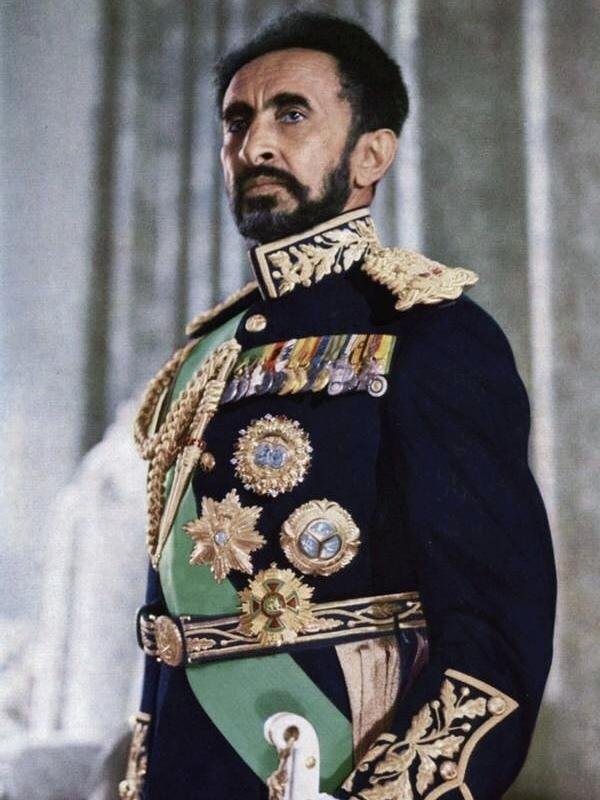In April 1966, a momentous chapter in jamaica’s history unfolded with the visit of Emperor Haile Selassie I of Ethiopia, a leader revered not only for his political acumen but also for his symbolic meaning to the global Rastafarian movement. This landmark meeting, which marked the first time a reigning monarch had set foot on jamaican soil, transcended mere diplomacy; it was a powerful event that resonated deeply within the hearts of the jamaican people. Haile Selassie’s visit was more than a diplomatic engagement; it was a cultural awakening, highlighting the strong ties between Africa and the African diaspora, particularly in the Caribbean. His arrival ignited a festivity of heritage, pride, and unity, drawing thousands to Kingston to pay homage to the emperor, who embodied the hopes and aspirations of many. Through this meeting, Selassie reaffirmed his commitment to social justice and human rights, themes that continue to inspire generations. This article explores the significance of Emperor haile Selassie’s visit to Jamaica, its historical context, and the enduring legacy of this remarkable encounter.
The Symbolic Significance of Emperor Haile Selassies Visit to Jamaica
The visit of Emperor Haile selassie to Jamaica in 1966 was a profound event, not only marking a notable moment in history but also serving as a catalyst for cultural and spiritual renewal within the Rastafarian movement. His presence was seen as a divine affirmation of the faith for many Jamaicans and followers of Rastafarianism across the globe. The significance of this visit can be encapsulated in several key elements:
- Empowerment of Identity: Selassie’s visit represented a powerful affirmation of African heritage and pride,encouraging many Jamaicans to reclaim their roots and recognize their ancestral ties.
- Spiritual Awakening: For Rastafarians, Selassie symbolizes not just an emperor but a messianic figure. His visit was likened to a pilgrimage, imbuing followers with renewed spiritual vigor.
- Cultural Exchange: The emperor’s engagement with local leaders and communities forged bonds between Africa and the Caribbean, promoting understanding and solidarity among people of african descent.
- Political Influence: By attending this historic event,Selassie emphasized the importance of unity among African nations and the Diaspora,advocating for freedom and equality.
This momentous occasion included a ceremonial welcoming and addresses that echoed themes of peace, unity, and the importance of self-determination. The Emperor’s message influenced not just the psyche of a nation but resonated far and wide, inspiring movements and activists in their quests for justice and equality. The vibrant celebrations and the palpable atmosphere during his visit highlighted a rekindling of hope that transcended geographical boundaries, thereby embedding the event as a cornerstone in Jamaica’s historical narrative and the broader African diaspora. Selassie’s symbolic significance continues to reverberate, as evidenced by his legacy within Rastafarian culture, seen today in various arts, music, and community engagements, all of which can be explored further on Gezify.
| Aspect | Significance |
|---|---|
| Heritage | Reinforced pride in African ancestry |
| Spirituality | Strengthened Rastafarian faith and beliefs |
| Unity | Fostered African and Caribbean bonds |
| Political Awareness | Encouraged activism and civil rights |
Embracing the Legacy of Rastafarianism: Recommendations for Honoring the historical Meeting
Honoring the profound legacy of Rastafarianism and the memorable visit of Emperor Haile Selassie to Jamaica is pivotal in appreciating the cultural significance embedded within this historic encounter.To truly embrace this legacy, consider the following recommendations:
- Participate in Cultural Celebrations: Engage in local festivals and events that pay tribute to Rastafarian culture. These gatherings provide an chance to experience music, food, and art that resonate with the teachings of the Emperor.
- Visit Key Historical Sites: Explore locations such as the Bob Marley Museum and the Rastafari Indigenous Village. These venues offer insight into the principles of Rastafarianism and the impact of Selassie’s visit on Jamaican culture.
- Support Local Artisans: Buy from local artists and craftspeople who reflect Rastafarian themes in their work. This not only boosts the economy but also promotes the preservation of cultural heritage.
- Educate and Share: Use platforms like Gezify to raise awareness about Rastafarian history and the significance of Haile Selassie’s visit. Sharing knowledge helps to deepen the understanding of this rich cultural tapestry.
- Practice Mindfulness and Reflection: Embrace the values of peace, love, and unity that rastafarianism embodies.Regular reflection through meditation or communal gatherings can foster a deeper connection to its teachings.
As we celebrate the legacy intertwined with Emperor Haile Selassie’s visit, let us commit to honoring these practices that enrich our understanding and appreciation of this wonderful culture. Through such efforts, the spirit of this historic meeting continues to inspire unity and respect across generations.
| Legacy Aspects | Recommended actions |
|---|---|
| Art & Music | Attend reggae concerts and art exhibits |
| Community values | Join community service initiatives |
| History | Read books and articles on Rastafarianism |
Emperor Haile Selassie’s visit to Jamaica in 1966 marked a profound moment in the island’s history, bridging cultures and igniting a spirit of unity among the African diaspora. His message of peace, resilience, and pride in heritage resonated deeply, inspiring generations to embrace their identity and history. As we reflect on this significant meeting, it serves as a reminder of the enduring connections between nations and the enduring power of leadership in fostering hope and understanding.The echoes of that historic encounter continue to inspire Jamaica and the world today.
